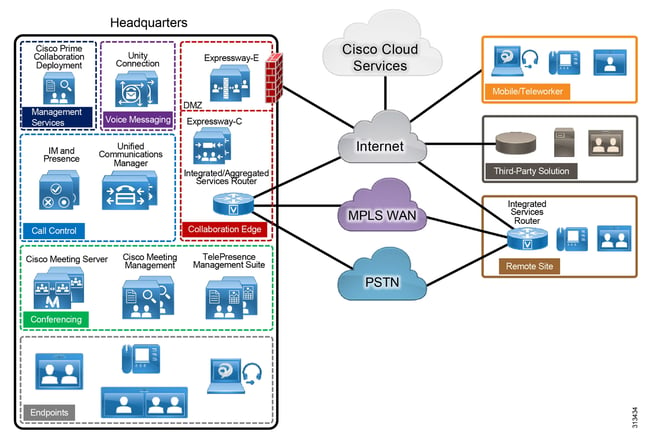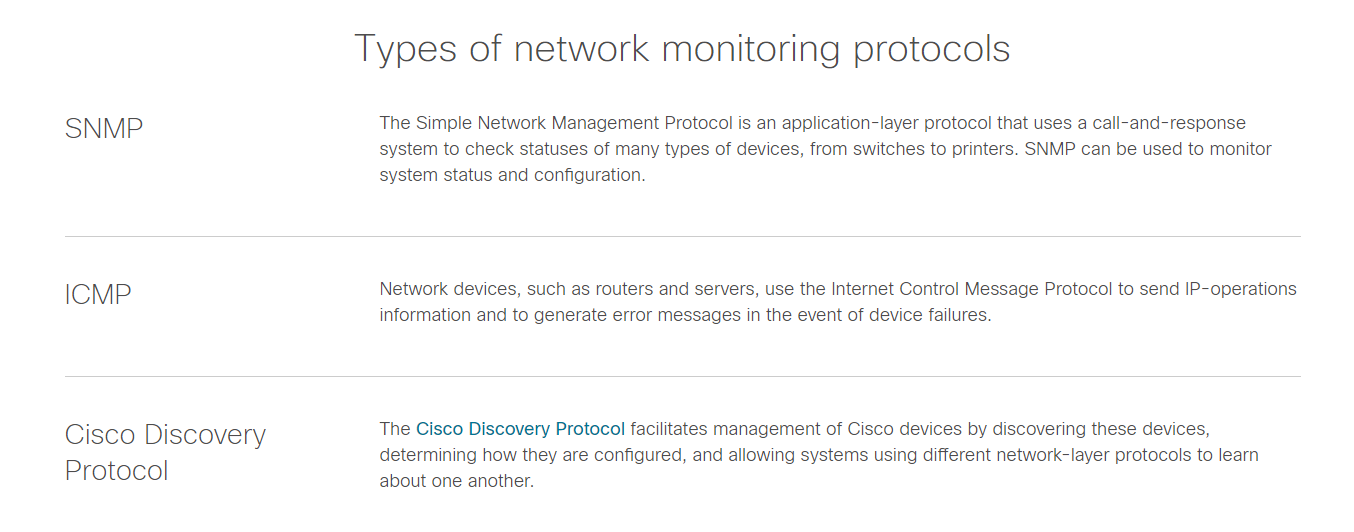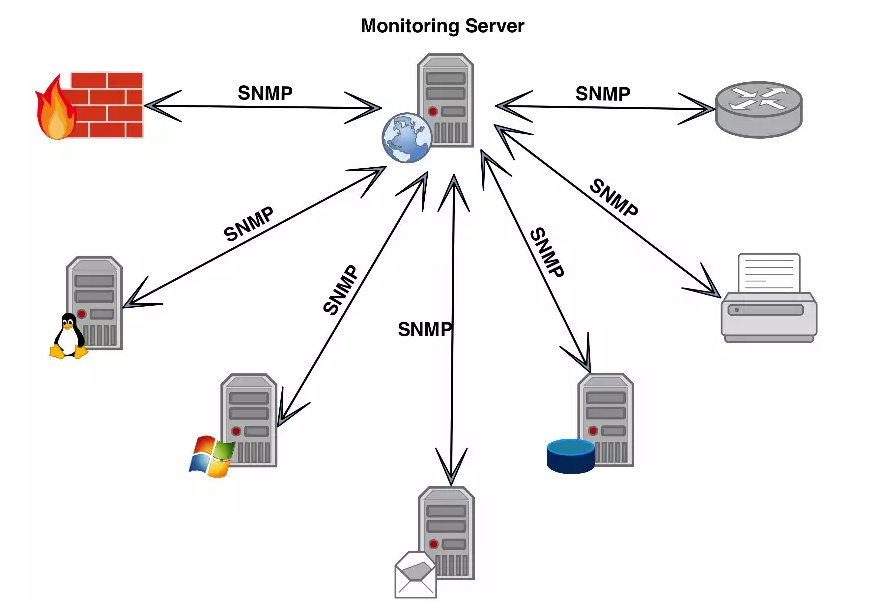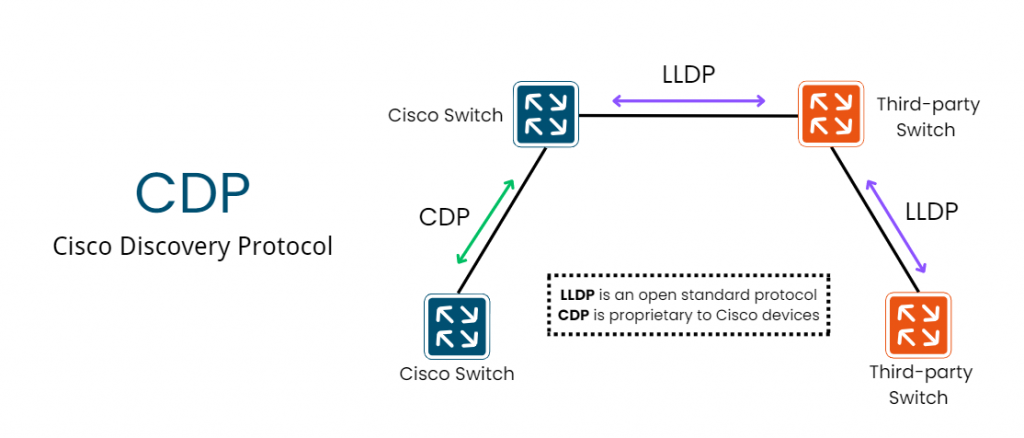Many large enterprise organizations deploy Cisco UC products and network devices in one form or another. This includes Cisco switches and routers and many other types of Cisco network devices. The company supplies a vast array of entire network hardware including gateways, firewall, and wireless access points.
Not only does Cisco supply the devices and hardware, but their Webex suite of collaboration solutions has over 10 million users worldwide, and provide a seamless way to collaborate.
Whether your network consists entirely of Cisco networking devices and applications, or a mix of vendor products you'll need a network monitoring system to monitor and manage all of your network components.
In this post, we'll talk about the importance of having Cisco network monitoring tools in place to manage and monitor your Cisco devices and applications. We'll cover the monitoring capabilities of Cisco's built-in tools, vs the benefits of using a third party monitoring solution like IR Collaborate, a preferred Cisco partner.
Find out more about network monitoring in our comprehensive guide
What is Network Monitoring? Third party vs Cisco Network Monitoring Tools
What are network monitoring systems?
There are so many network components that make up a communication hub, including possibly hundreds of on-site and remote devices, switches and routers, endpoints and many other moving parts. Without a centralized monitoring tool, network administrators would have no efficient way to keep track of your network topology.

Without network monitoring, your network is open to performance failure, security breaches, bottlenecks in network traffic and ultimately downtime which can result in devastating losses for organizations.
Network monitoring enables network administrators to gather the information and data they need in real time, to see whether a network is running optimally, and proactively identify deficiencies.
Additionally, monitoring software can optimize efficiency, control bandwidth utilization, carry our server monitoring, and identify where problems are occurring, for example in your Cisco routers or any other Cisco device.
Cisco network device monitoring can also detect device or connection failures precisely when and where they happen, enabling faster resolution and efficient troubleshooting, no matter what your network size.
Types of network monitoring protocols
Network monitoring protocols are used to track and provide reports on data and traffic that flows to and from network links – between a host and client device.
The data that's collected is then processed and graphically displayed via Graphic User Interface (GUI), so that network administrators can effectively manage the network’s activity. Network hardware can't transmit data without using protocols. These are the types of network monitoring protocols:

SNMP
Simple Network Management Protocol (SNMP) is an application layer protocol included in the internet protocol suite, a set of the most commonly used communication protocols online.
SNMP is used to collect data related to network changes or to check the status of your network-connected Cisco devices. SNMP monitoring enables IT professionals to proactively watch over all their managed devices and applications.
When thresholds for certain values are exceeded, software can alert system administrators of the problem, allowing them to drill into the data and troubleshoot a solution.

Image source: Ozeki
ICMP
Internet Control Message Protocol (ICMP) is used specifically for reporting errors in network traffic. Network devices rely on ICMP to transmit error messages, for example, in a case where a host or client can't be reached, or queried information is not available.
Unlike SNMP, ICMP is not used in scenarios where an exchange of data takes place between systems. Instead, it’s often used by network admins and analysts to troubleshoot internet connections within diagnostic utilities such as traceroute or ping.
Common error messages ICMP reports include Time Exceeded, Destination Unreachable, Packet Too Big, Parameter Problem etc.

Image source: Fortinet
Cisco Discovery Protocol
Cisco Discovery Protocol (CDP) runs over Layer 2 (the data link layer) on all Cisco routers, bridges, access servers, and switches.
CDP allows network management applications to discover Cisco devices that are neighbors of existing devices running lower-layer, transparent protocols. With CDP, network management applications can learn the device type and the SNMP agent address of other neighboring devices allowing queries to be sent to them.

What is Cisco Network Security?
With the advent of remote working, and the use of BYO devices, security is becoming much more difficult to implement and maintain. Cisco's Network security combines multiple layers of defences at the perimeter and within the network.
Each network security layer implements specific policies and controls. With Network Security, authorized users can gain access to network resources, while malicious infiltrators are blocked from carrying out exploits and threats.
How do organizations benefit from Network Security?
Digitization has transformed how we live, work, play, and learn. Every organization that wants to deliver the services that customers and employees demand needs to protect its network. Network Security also helps network administrators protect proprietary information from attack, safeguarding your reputation.

Why you need an all-in-one Cisco monitoring tool?
Cisco provides specific configuration management tools for its devices, and apps like Cisco Active Advisor to reduce network risk and boost protection from security threats.
But when it comes to a Cisco network monitoring tool, you need a general network monitoring solution that can discover devices automatically, identify and keep track of your Cisco switches and devices, provide network insights and create network topology maps so that you can see your whole network in one picture.
Monitoring and troubleshooting your Cisco environment with IR Collaborate
As we've already established, network performance is a huge priority for every enterprise organization. Monitoring with an all-encompassing third party monitoring solution like IR Collaborate gives you full visibility into every aspect of your UC network, not just for Cisco equipment but for all the applications and devices connected to your network.
With the Cisco Network Assistant now retired, there are many monitoring alternatives like the Paessler PRTG Network Monitor, Datadog network monitoring or Solarwinds network performance monitor, that can monitor Cisco devices and applications, and provide general network performance monitoring.
But their monitoring capabilities and effectiveness ends when trying to manage larger enterprise networks, and other vendor products, like Microsoft, HP, Dell, Avaya or others.
As a long time Cisco solution partner, IR Collaborate is the only Cisco monitoring solution you need to be in full control of your system status 24/7.
Call quality and user experience
IR Collaborate provides monitoring, analytics, and diagnostics to identify, troubleshoot, and resolve the root cause of voice and video call quality issues like connectivity, network latency, jitter, and packet loss throughout the entire solution environment.
Video conferencing performance
To be confident that your Cisco video systems are performing as they should, you need complete visibility, monitoring, and alerting. You'll know when, and why, video quality may be degraded, before it impacts meeting productivity, employee satisfaction and business relationships.
Contact center management
Deliver a consistent and reliable customer experience by ensuring mission-critical Cisco systems are operating as expected, all the time. With IR Collaborate you can proactively monitor and manage internal systems and call quality with outside-in availability and capacity testing.
Experience management for Webex
User experience is paramount, particularly when mobile devices are a big part of your communications arsenal. See conversation details throughout all your connected devices, call quality data and through customized reports, you'll see a complete picture of user experience for Webex Meetings.
Complete end-to-end troubleshooting
With complete end-to-end visibility and alerting of your Cisco and multi-vendor environment, including SBCs, servers, network, device performance and endpoints, you can quickly identify and resolve the root cause of problems that impact user experience and productivity.
Testing your Cisco platforms
No organization is willing to risk their business on an untested system. Testing shines a light on system glitches and incompatibilities that could potentially cause prolonged downtime, poor performance. Without testing you risk losing customers and threatening your bottom line.
Broad multi-vendor coverage
With wide reaching multi-vendor technology coverage across Cisco, Microsoft Teams, Zoom and Avaya solutions and infrastructure, IR Collaborate provides proven results covering extensive unified communications, specific network troubleshooting with comprehensive support for SBCs and gateways.
More than 600 organizations in over 60+ countries, including some of the world’s largest banks, airlines and telecommunications companies, rely on IR Collaborate to provide business critical monitoring and insights and ensure optimal performance and user experience for their customers across the globe 24x7.





